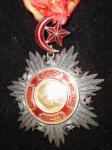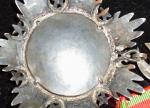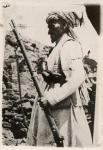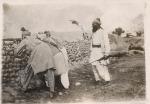-
Posts
29,251 -
Joined
-
Last visited
-
Days Won
84
Content Type
Profiles
Forums
Blogs
Gallery
Events
Store
Everything posted by Chris Boonzaier
-
-
-

North Western Frontier
Chris Boonzaier replied to Chris Boonzaier's topic in Great Britain: Research, Documentation & History
-

North Western Frontier
Chris Boonzaier replied to Chris Boonzaier's topic in Great Britain: Research, Documentation & History
-

North Western Frontier
Chris Boonzaier replied to Chris Boonzaier's topic in Great Britain: Research, Documentation & History
-

North Western Frontier
Chris Boonzaier replied to Chris Boonzaier's topic in Great Britain: Research, Documentation & History
-

North Western Frontier
Chris Boonzaier replied to Chris Boonzaier's topic in Great Britain: Research, Documentation & History
-

North Western Frontier
Chris Boonzaier replied to Chris Boonzaier's topic in Great Britain: Research, Documentation & History
-
I think most people believe that, it is a legend that does the rounds.... however... I always thought the one swipe decapitation was a myth or legend... then found I had a medal to a guy who was "there" when it happened. I think the "must draw blood" thing must have started when everyone started bothering Gurkas to show them theirfunny knives... and one gurka came up with the idea... to scare off the curious !
-
-
You mean this.... "2nd Lt. Charles Winton, Indian army reserve of officers, attd to 1st Btln Queen Victorias Own (corps of Guides) (in Egypt) For conspicuous gallantry and good leadership north of Arsuf on 13th July, 1918. He was in command of a daylight raid on two enemy strongpoints, and it was mainly due to his coolness and leadership that the whole affair was carried out so successfully. He personally killed two enemy with the bayonet" It was an interesting citation and after having bought the group, I found the following information.. "On the 13th July a most successful daylight raid was carried out by Lt. Winton and a party of Guhrka volunteers, including Havildars Dhan Jit and Puran Bahadur, Naik Karma Dhoj and lance-NAik Hasta Ram. The objectives were 2 strog points in front of the right of the battalion line and 150-200 yards from it. The raid, which was carefully planned and rehearsed, took place at 1:00pm, the time of day when the Turks were usually most inactive. The raiders left our trenches and creeping down a Wadi in No mans land for about 100 yards then advanced across the open to their first objective. As the Gurkhas neared the enemys line they drew their kukris and leaping down upon the astonished Turks speedily cleared the trench, 7 Turks being killed there, while 5 prisoners and a MG were captured. The party then advanced and cleared the other strong point, a seperate redoubt, 15 Turks in all being killed and 15 prisoners (5 wounded) being taken. The raiders then returned across no mans land, the operation having worked exactly to plan and having taken only 12 minutes from start to finish. This raid was thus refered to in an English newspaper... Decapitated with a Kukri. A subaltern in charge of a party had an extraordinary experience. He had stuck his bayonet into a Turk, but was unable to disengage owing to the narrowness of the Trench. Another Turk beyond began jabbing the butt end of his rifle into the ribs of the officer, and seemed likely to inflict an Injury, when the officer saw his assailants head leap from his shoulders, a Ghurka having dextrously decapitated him with his Kukri, which is an invaluable weapon at such close quarters. This is the actual of Lt Winton during the raid and the Gurkha was Sepoy Mardani of the Guides. ".... This impression of a distancing of the officer from the infliction of death is reinforced by reading the citations which are written to explain and endorse the award of high decorations for bravery: those written for soldiers lay stress on thier success at killing - "lance-corporal .... courageously worked his way round the flank of the machine-gun which was holding up the advance and then charged it, firing his carbine from the hip, so accounting for six of the enemy" (Citation writers, flinching from "Kill", deal largely in "account for", "Dispatch", "dispose of"); on the other hand, those written for officers minimize their direct responsibility for killing and emphasize their powers of inspiration and organisation when all about are loosing theirs (in the metaphorical sense; nothing so nasty as decapitation ever creeps into a citation) -"Captain....., taking command at a difficult moment of the battle, quickly rallied his men and, without regard for his own safety, led them back over the open to the position they has earlier bben forced to leave..."
-
The little flap I got closing with some oil and a few bangs with a wooden mallet. The leg of mine was rusted stiff though. There I had to coat it in oil, get one of those heating guns used to strip paint and apply heat for about 5 minutes... then a bang with a wooden mallet... now it turns like it did the day it left the factory.
-
Looks like one of those badges worn in the buttonhole of the collar of a civilian suit. Back in the days when folks were gentlemen and wore a jacket even while at home and tracksuits were unknown.
-
Looking at all the stuff at shows... it seems to me that 1) there is no medal, of any nation, that is as istantly recognisable as the EK. 2) It is the 1914 iron cross that gripped the German fantasy more than any other, it is the 1914 cross that became an integral part of every day life. At no other conflict do you see it used so "across the board", on rings, breadplates, beer mugs, broches, necklaces, postcards, match holders, bookmarks, ... you name it,at every part of the civilians day, he was confronted with the EK motiv. This was not to be in WW2..... Why is this ? Best Chris

















